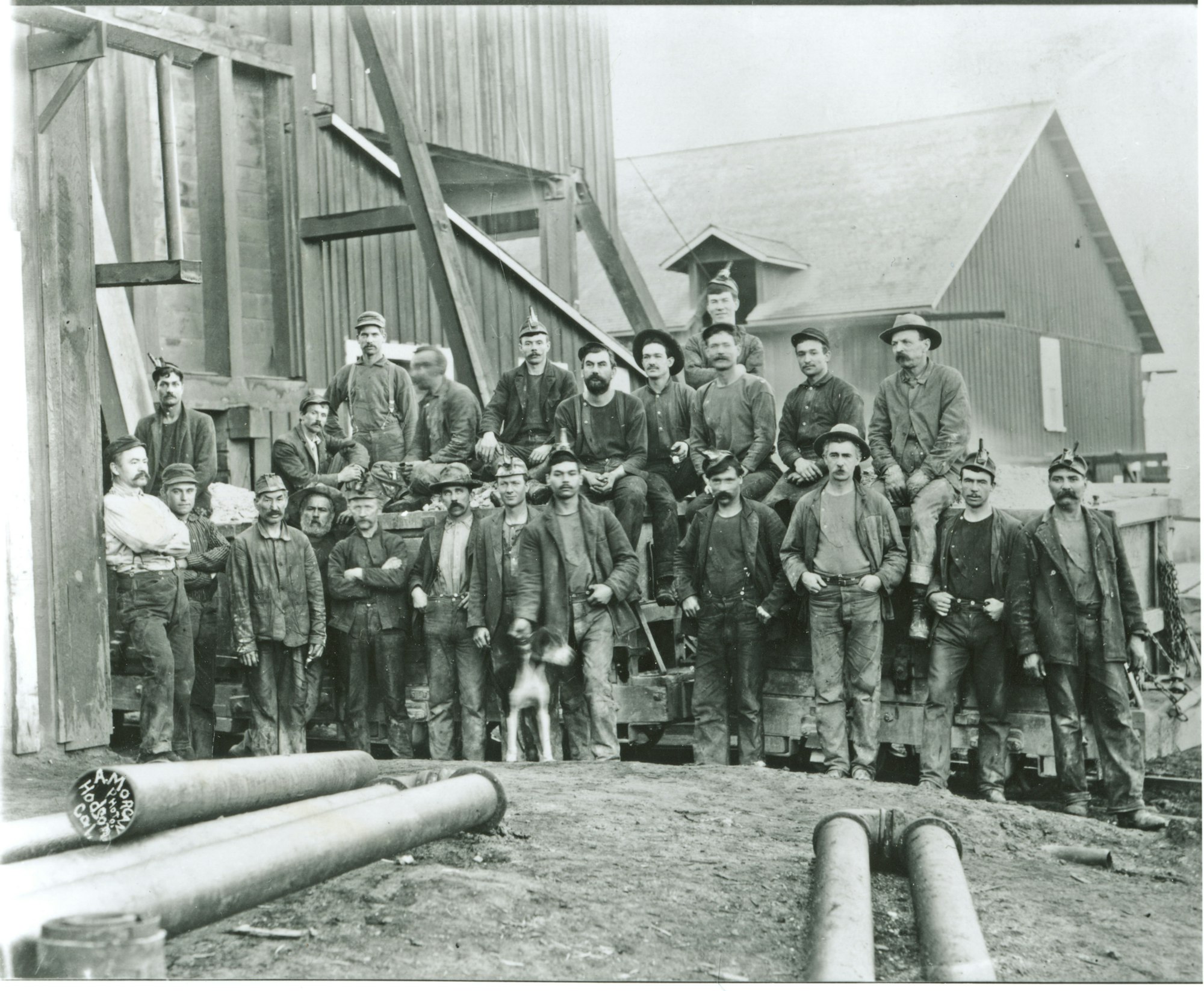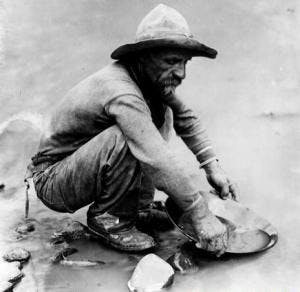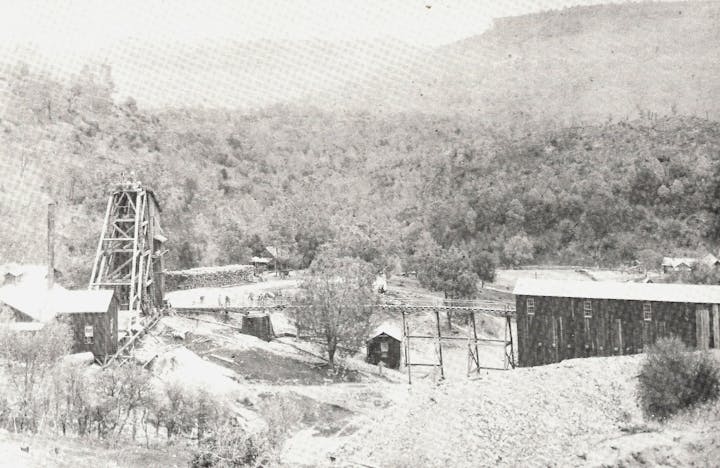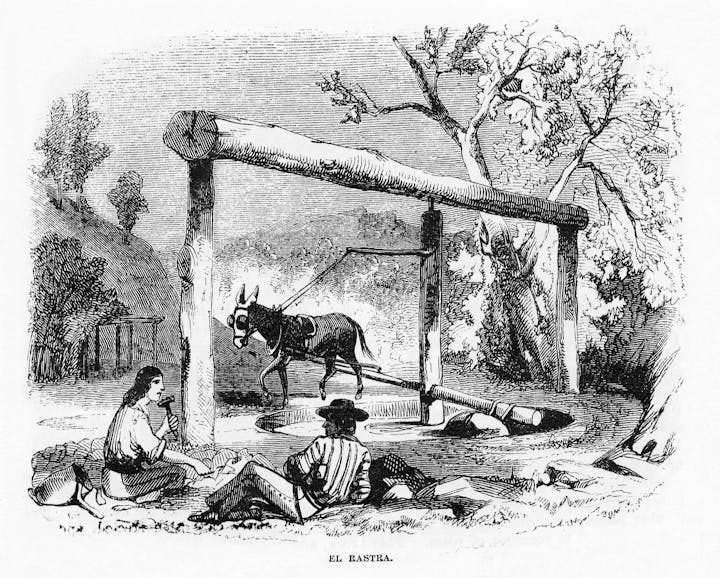Mining

Gold was first found in Calaveras County along the banks of the Mokelumne, Calaveras, and Stanislaus rivers, as well as in virtually every stream drainage. Towns, such as Murphys, Angels Camp, and Mokelumne Hill quickly sprang up around the major strikes. Extensive placer mining was carried out during the early years of the Gold Rush in nearly all the ravines and gulches in the area and the results of this work may still be seen in the drainages throughout the county.
It was not until the mid-1850s that gold was discovered in the quartz veins in the county, providing the impetus for another boomlet in the area. There was intermittent activity through the 1860s, and another small boom in the 1870s, but little sustained mining industry until the late 1880s consolidations of the mines, facilitated by advances in mining and milling technologies and the availability of eastern U.S. and foreign capital which combined to warrant large-scale underground mining. Although not a consistent employer, the industry experienced several significant revivals, particularly in the late 19th century and again in the early 20th century.
Mining accounted for the location and names of most of the towns and communities within the area. The larger towns were located where major strikes occurred, or where supply camps sprang up to provide necessities for the surrounding encampments. Along the Mother Lode, Angels Camp was named for Henry P. Angel, who operated the first trading post there in 1848, while Carson Hill was named for James Carson, an early miner in the area. Mokelumne (on the Hill) was named for the Native American tribe who resided along the river, and San Andreas for the Hispanic church established there. Other communities took their names from events, locations, or geographical features.
Many gold camps in Calaveras were abandoned after the first rush (Chile Camp, Esperanza, Pleasant Springs, Esmeralda, Mosquito Gulch), and others inundated later by reservoirs (Camanche, Robinson’s Ferry, Lancha Plana, Petersburg, Melones, Six Mile Bar). The towns which remained were either located in important mineral producing areas or served as supply centers for the surrounding mining camps (Angels Camp, West Point, San Andreas, Mokelumne Hill, Copperopolis). Murphys, which started as a mining camp, lasted due to its proximity to the nearby natural wonders: the Big Trees, San Antonio Falls, Natural Bridges, and caverns. Copper was discovered near Copperopolis in 1860, and near Campo Seco in 1862, and both communities flourished during the Civil War, producing copper for shell casings for the Northern cause.
Until recent times, socioeconomic development in the area has occurred primarily within the context of the mining industry. Not only did the industry lead to the formation of Calaveras County in 1850, it was the main pillar of the local economy for nearly 75 years thereafter. Almost all other businesses operated within the shadow of mining and were directly or indirectly affected by it. Mining changed over the years, from early placer mining, to later hydraulic and hard-rock (or quartz) mining. Although consolidation of the larger mines took place during the 1880s and 1890s, numerous small operations were also producing, as were the prospects of individual miners. Many of the mines closed during World War I, had a small boomlet in the 1930’s Great Depression, but were shut down in 1942 with the executive order that closed all non-war related industries, and have seen only sporadic activity since.
The preeminence of mining, however, ensured that all other local industries would be its auxiliaries. Transportation, lumbering, water, power generation, and ranching have all been directed and influenced by the mining industry.
Within a few scant years after the discovery of gold, sawmills were established, initially to provide lumber and timbers for the flumes, shafts, adits, headframes, and mills of the mining industry. Soon thereafter, however, they were expanded to provide materials for residential and commercial construction as well, continuing sporadically until the mid-20th century. During World War II, when lumber was identified as a critical resource, large new lumber mills and company towns were established in the upper regions of the county, and logging trucks penetrated the high country. Flush times continued through the 1960s when most of the mills closed.
By Judith Marvin








